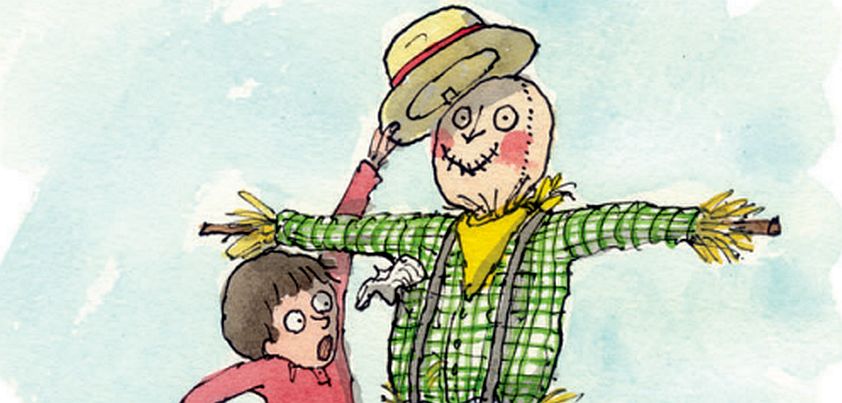 In this story by Marilyn Helmer for Cricket Magazine, two brothers set out to prove their grandfather was joking when he told them an old straw hat he never wears has the magical ability to bring things to life. They decide to test the hat by placing it on the head of scarecrow standing in a neighbor’s garden. As they are doing this, the neighbor’s dog barks and the boy’s flee, leaving the hat behind. Later that night, they are shocked when a stranger dressed exactly like the scarecrow joins a neighbourhood barn dance. More…
In this story by Marilyn Helmer for Cricket Magazine, two brothers set out to prove their grandfather was joking when he told them an old straw hat he never wears has the magical ability to bring things to life. They decide to test the hat by placing it on the head of scarecrow standing in a neighbor’s garden. As they are doing this, the neighbor’s dog barks and the boy’s flee, leaving the hat behind. Later that night, they are shocked when a stranger dressed exactly like the scarecrow joins a neighbourhood barn dance. More…
Category Archives: Grade 3-4 Stories
Two Dollars
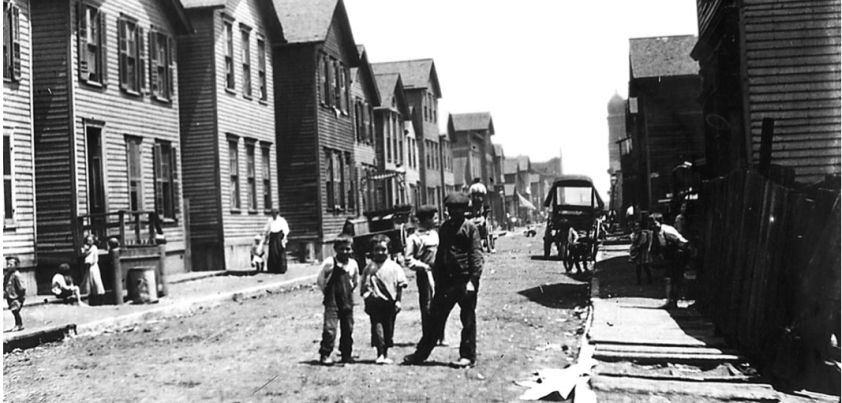 The major themes of this Sharona Vedol story from Spider Magazine are compassion and generosity. Set during the Great Depression, a young girl accompanies her father to collect rent from families in their apartment blocks. She sees first-hand the hardship being experienced by tenants, and is impressed by the respect and understanding her father shows for each family. She is shocked when they come to a family who have no money left over for food, and worries her father will be angry about something she buys with the two dollars he gives her to buy them groceries. More…
The major themes of this Sharona Vedol story from Spider Magazine are compassion and generosity. Set during the Great Depression, a young girl accompanies her father to collect rent from families in their apartment blocks. She sees first-hand the hardship being experienced by tenants, and is impressed by the respect and understanding her father shows for each family. She is shocked when they come to a family who have no money left over for food, and worries her father will be angry about something she buys with the two dollars he gives her to buy them groceries. More…
A Fish Named Dog
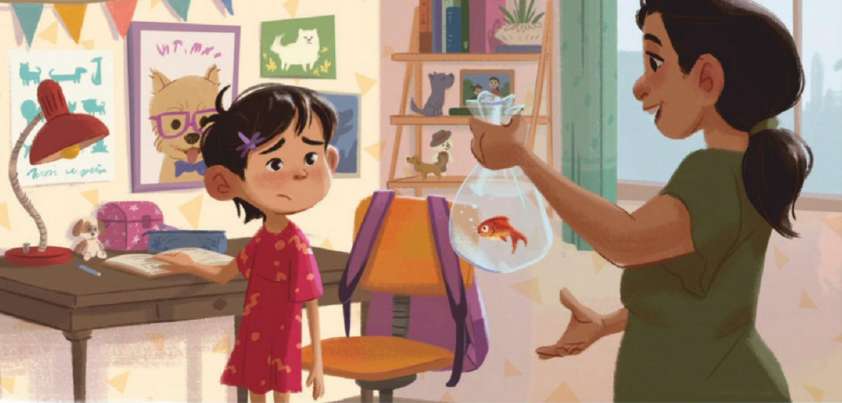 Like many children, the girl in this story by Christyne Morrell for Spider Magazine dreams of having a pet dog or cat. Unfortunately, this is not to be. Her parents give her a goldfish instead! To make sure her mother and father know what she really wanted, she names the fish “Dog.” This must have hurt the fish’s feelings because, much to the girl’s surprise, it begins to live up to its new name. By the end of the story the girl and fish are happy, her friends are amazed, and some readers may never want to eat fish again. More…
Like many children, the girl in this story by Christyne Morrell for Spider Magazine dreams of having a pet dog or cat. Unfortunately, this is not to be. Her parents give her a goldfish instead! To make sure her mother and father know what she really wanted, she names the fish “Dog.” This must have hurt the fish’s feelings because, much to the girl’s surprise, it begins to live up to its new name. By the end of the story the girl and fish are happy, her friends are amazed, and some readers may never want to eat fish again. More…
Shells
 In Shells by Cynthia Rylant, a recently orphaned boy named Michael is having problems adjusting to living with his aunt Esther. She has never had children, and is very set in her ways. Michael feels alone in the world. He misses his parents, and goes to a new school where he has no friends. Desperate for company, Michael looks in a pet store for ‘some small living thing’ to brighten up his life. He finds just the right pet. When Aunt Esther shows an interest in it, both Michael and the pet start to come out of their shells. More…
In Shells by Cynthia Rylant, a recently orphaned boy named Michael is having problems adjusting to living with his aunt Esther. She has never had children, and is very set in her ways. Michael feels alone in the world. He misses his parents, and goes to a new school where he has no friends. Desperate for company, Michael looks in a pet store for ‘some small living thing’ to brighten up his life. He finds just the right pet. When Aunt Esther shows an interest in it, both Michael and the pet start to come out of their shells. More…
The Velveteen Rabbit
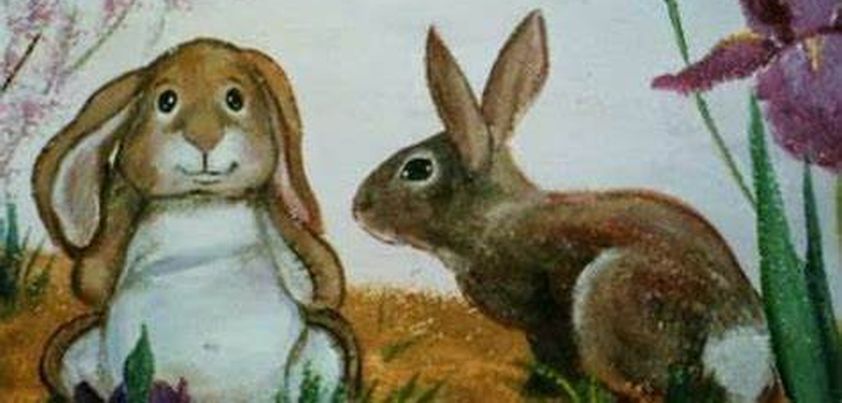 The major theme of this touching children’s fantasy (aka How Toys Become Real) from Margery Williams is the transforming power of love. A cheaply made stuffed toy (Rabbit) is made to feel inferior by the more “advanced” toys in the nursery. A wise but badly worn old toy (Skin Horse) gives it some memorable advice: Real isn’t how you are made. It’s a thing that happens to you. When a child [someone] loves you for a long, long time, not just to play with, but REALLY loves you, then you become Real. Other themes: being different, rejection, hope, loss, fulfillment. More…
The major theme of this touching children’s fantasy (aka How Toys Become Real) from Margery Williams is the transforming power of love. A cheaply made stuffed toy (Rabbit) is made to feel inferior by the more “advanced” toys in the nursery. A wise but badly worn old toy (Skin Horse) gives it some memorable advice: Real isn’t how you are made. It’s a thing that happens to you. When a child [someone] loves you for a long, long time, not just to play with, but REALLY loves you, then you become Real. Other themes: being different, rejection, hope, loss, fulfillment. More…
The Champion of Quiet
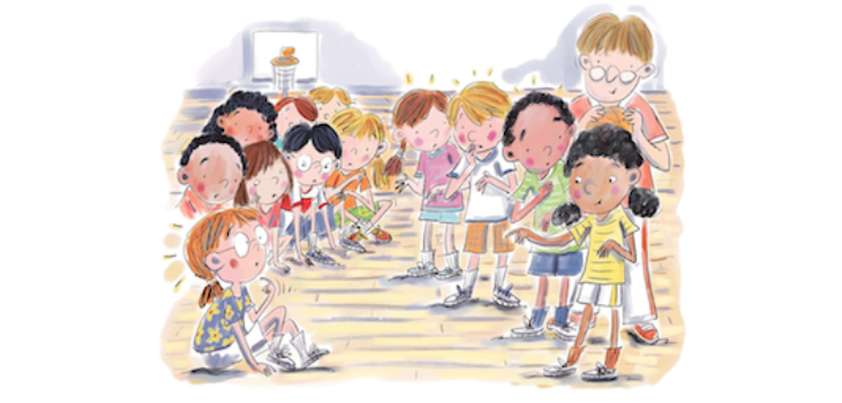 This story by Tracy Stewart for Highlights Magazine includes a number of important life lessons for young learners. The first is individual differences. Nobody is good at everything, but almost everybody is good at something. Importantly, you don’t have to be good at something to enjoy it. By joining in and trying your best, you can have just as much fun as those who are great at it. Maggie proved that she wasn’t just the Champion of Quiet. She became the Champion of Understanding and Kindness, and learned that this is the easiest way of all to make new friends. More…
This story by Tracy Stewart for Highlights Magazine includes a number of important life lessons for young learners. The first is individual differences. Nobody is good at everything, but almost everybody is good at something. Importantly, you don’t have to be good at something to enjoy it. By joining in and trying your best, you can have just as much fun as those who are great at it. Maggie proved that she wasn’t just the Champion of Quiet. She became the Champion of Understanding and Kindness, and learned that this is the easiest way of all to make new friends. More…
The Patient Cat
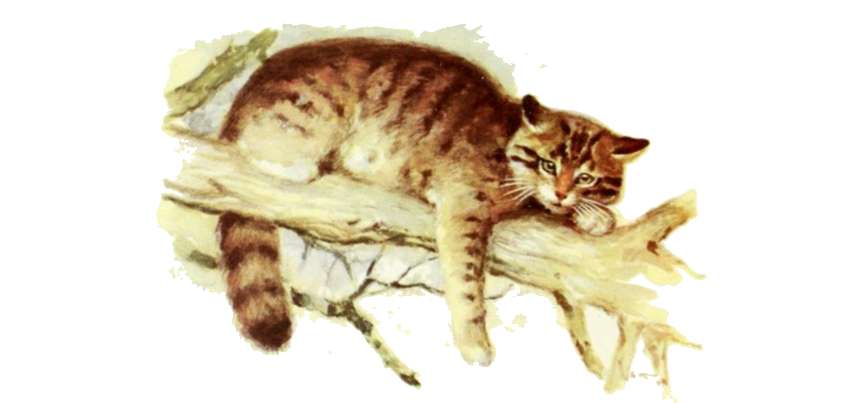 This short fable by Laura E. Richards teaches a lesson about patience. The cat showed patience in waiting for the bird to lay all of its eggs, and then waiting until the eggs had hatched. It also showed patience in not pouncing as soon as the chicks were born, but leaving them until they started to get fat. There was a point shortly after this where the cat should have enjoyed its meal. This leads to the moral of the story: being patient is a good thing, but it is equally important to know the right time to act. More…
This short fable by Laura E. Richards teaches a lesson about patience. The cat showed patience in waiting for the bird to lay all of its eggs, and then waiting until the eggs had hatched. It also showed patience in not pouncing as soon as the chicks were born, but leaving them until they started to get fat. There was a point shortly after this where the cat should have enjoyed its meal. This leads to the moral of the story: being patient is a good thing, but it is equally important to know the right time to act. More…
The Fun They Had
 This story by Isaac Asimov is set in the year 2155. A boy shows a friend something strange he found hidden away in his family attic. Neither of them has seen one before… it is a book! First, they discuss how wasteful paper books were compared to electronic books of their day. The book is about school, and they go on to compare home schooling of the future with “going to school” in the past. Themes include technological progress, human connection (computer-driven vs. classroom learning), paper-based vs. electronic reading, memories, longing for aspects of the past. More…
This story by Isaac Asimov is set in the year 2155. A boy shows a friend something strange he found hidden away in his family attic. Neither of them has seen one before… it is a book! First, they discuss how wasteful paper books were compared to electronic books of their day. The book is about school, and they go on to compare home schooling of the future with “going to school” in the past. Themes include technological progress, human connection (computer-driven vs. classroom learning), paper-based vs. electronic reading, memories, longing for aspects of the past. More…
Grandad’s Gifts
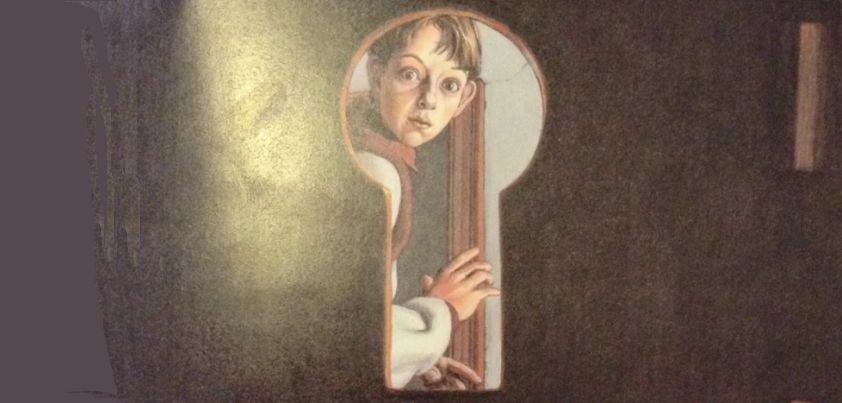 This story from Paul Jennings disproves the English proverb Curiosity killed the cat. When protagonist Shane’s family move into his deceased grandfather’s house, his father points to a cupboard in his bedroom and says: We can’t open that. I promised my father. Grandad locked it up many years ago and it’s never been opened. I lived in this bedroom for nineteen years and kept my promise. As might be expected, Shane develops a burning desire to discover the cupboard’s secret. Rather than killing a cat, his curiosity gives a different animal a new life. Themes: curiosity, disobedience, kindness, the supernatural. More…
This story from Paul Jennings disproves the English proverb Curiosity killed the cat. When protagonist Shane’s family move into his deceased grandfather’s house, his father points to a cupboard in his bedroom and says: We can’t open that. I promised my father. Grandad locked it up many years ago and it’s never been opened. I lived in this bedroom for nineteen years and kept my promise. As might be expected, Shane develops a burning desire to discover the cupboard’s secret. Rather than killing a cat, his curiosity gives a different animal a new life. Themes: curiosity, disobedience, kindness, the supernatural. More…
Stray
 Heavy snow can cause many problems, closing roads and stopping people from going to work or school. Today’s story from Cynthia Rylant is about Doris, an only child from a poor family. A cold, shivering puppy comes into her yard as she is clearing snow from around the front door. It has been abandoned. She takes the animal inside and cares for it, knowing that her parents will say they don’t have the money to keep a dog and take it away when the snow clears. The story’s themes are loneliness, compassion, responsibility, understanding, cruelty to animals, kindness and love. More…
Heavy snow can cause many problems, closing roads and stopping people from going to work or school. Today’s story from Cynthia Rylant is about Doris, an only child from a poor family. A cold, shivering puppy comes into her yard as she is clearing snow from around the front door. It has been abandoned. She takes the animal inside and cares for it, knowing that her parents will say they don’t have the money to keep a dog and take it away when the snow clears. The story’s themes are loneliness, compassion, responsibility, understanding, cruelty to animals, kindness and love. More…
Bigfoot Cinderrrrella
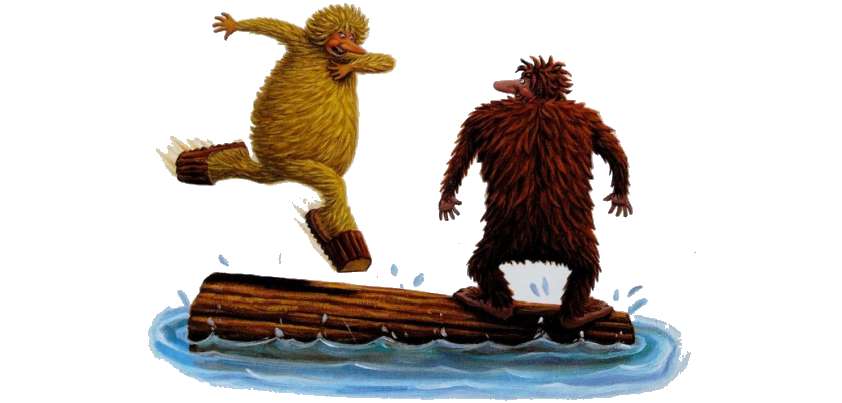 In a twist on the famous fairytale, this story from Tony Johnson is about big, hairy and very smelly Bigfoot girl. The Bigfoot prince is holding a fun-fest. A magic grizzly bear helps the girl get ready. He makes her fur especially dirty and smelly, and gives her special wooden shoes to wear. She wins the prince’s heart but (of course!) loses a shoe when she runs off early to be home in time. Fortunately, the story has a happy ending. She is the only girl in the forest with feet big enough to fit the shoe. More…
In a twist on the famous fairytale, this story from Tony Johnson is about big, hairy and very smelly Bigfoot girl. The Bigfoot prince is holding a fun-fest. A magic grizzly bear helps the girl get ready. He makes her fur especially dirty and smelly, and gives her special wooden shoes to wear. She wins the prince’s heart but (of course!) loses a shoe when she runs off early to be home in time. Fortunately, the story has a happy ending. She is the only girl in the forest with feet big enough to fit the shoe. More…
The Magic Sweet Shop
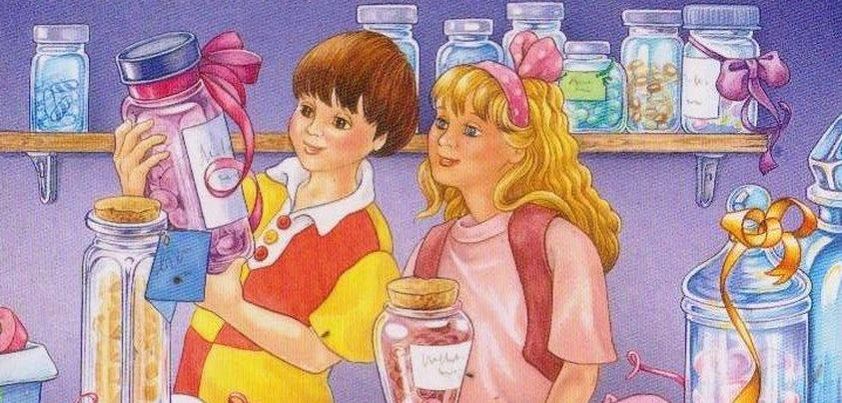 In this story by Enid Blyton, two children out playing in the woods follow a path they had not seen before. It leads to a small village in which there is a strange candy shop. They each buy five different colored sweets with unusual names: a Giant-sweet, Dwarf-sweet, Invisible-sweet, Spiky-sweet and Home-again-sweet. They then have some exciting adventures in which the candy they bought saves the day. As might be expected, the Home-again-sweet leads them home. When they take their mother to the path that led them to the village, they find that it is no longer there. More…
In this story by Enid Blyton, two children out playing in the woods follow a path they had not seen before. It leads to a small village in which there is a strange candy shop. They each buy five different colored sweets with unusual names: a Giant-sweet, Dwarf-sweet, Invisible-sweet, Spiky-sweet and Home-again-sweet. They then have some exciting adventures in which the candy they bought saves the day. As might be expected, the Home-again-sweet leads them home. When they take their mother to the path that led them to the village, they find that it is no longer there. More…
Do What You Can
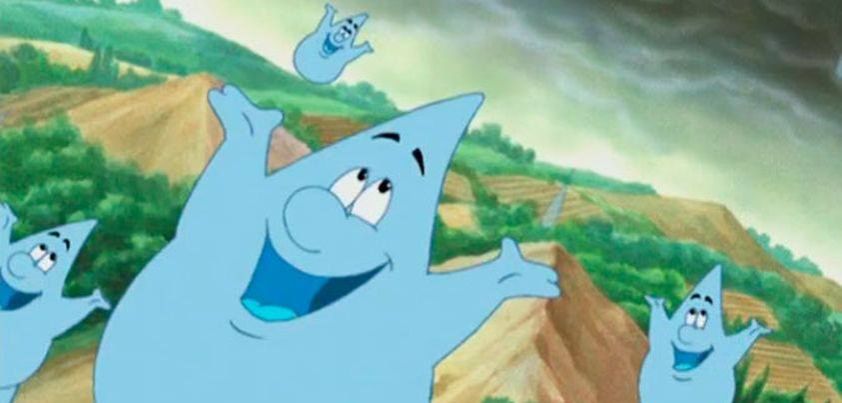 Sometimes a short, simple children’s story can carry a powerful message for people of all ages. Adapted from an old fable by Carolyn Sherwin Bailey, this story is about a raindrop that sees a farmer in distress. His carefully tended crop of corn is beginning to wither and droop and, although the raindrop knows it cannot save the crop alone, it decides to bring the farmer a moment of happiness. Contrary to the raindrop’s expectation, this makes a big difference. The story shows how a single act of kindness can often motivate others to also do good. More…
Sometimes a short, simple children’s story can carry a powerful message for people of all ages. Adapted from an old fable by Carolyn Sherwin Bailey, this story is about a raindrop that sees a farmer in distress. His carefully tended crop of corn is beginning to wither and droop and, although the raindrop knows it cannot save the crop alone, it decides to bring the farmer a moment of happiness. Contrary to the raindrop’s expectation, this makes a big difference. The story shows how a single act of kindness can often motivate others to also do good. More…
The Tale of the Two Oxen / Do Bailon Ki Katha
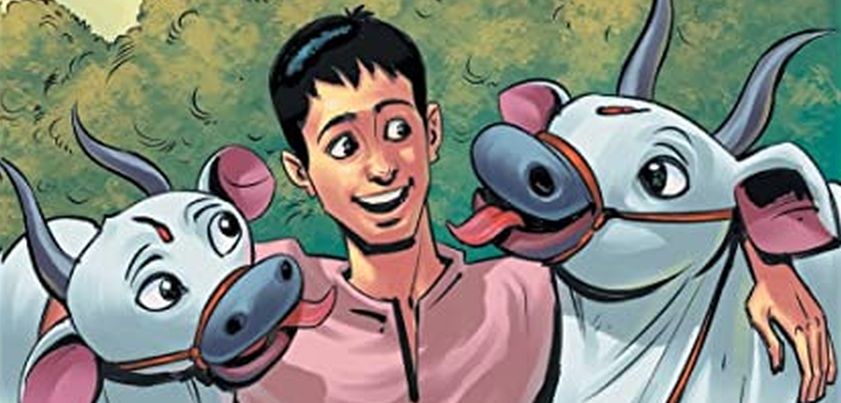 This story by Premchand has three important themes: kindness to animals, friendship and faith. A series of adventures begin for two oxen (Hira and Moti) when Jhuri, their much-loved owner, lends them to his wife’s brother who lives far away. The brother-in-law mistreats the poor animals and, with the help of a kind girl, they run away. Their friendship gives them the strength to endure an attack by a raging bull, beatings and starvation before being sold to a butcher. As they almost lose hope and begin to question their faith in god, a ‘miracle’ helps them return home. More…
This story by Premchand has three important themes: kindness to animals, friendship and faith. A series of adventures begin for two oxen (Hira and Moti) when Jhuri, their much-loved owner, lends them to his wife’s brother who lives far away. The brother-in-law mistreats the poor animals and, with the help of a kind girl, they run away. Their friendship gives them the strength to endure an attack by a raging bull, beatings and starvation before being sold to a butcher. As they almost lose hope and begin to question their faith in god, a ‘miracle’ helps them return home. More…
Licked
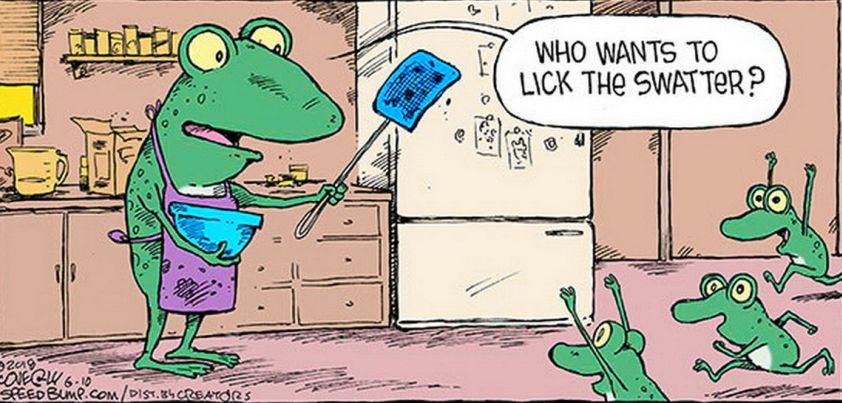 The major themes of this very funny story by Paul Jennings are practical jokes and consequences. Young Andrew learns that his father’s boss is coming to dinner. When he overhears his parents making a pact not to criticize his table manners during the meal, he decides to put them to the test. And just in case it looks like they will be able to keep their promise, he hides a ‘secret weapon’ under the table that is sure to make them angry. The secret weapon works, but Andrew hadn’t thought about what problems this might cause for his father’s job. More…
The major themes of this very funny story by Paul Jennings are practical jokes and consequences. Young Andrew learns that his father’s boss is coming to dinner. When he overhears his parents making a pact not to criticize his table manners during the meal, he decides to put them to the test. And just in case it looks like they will be able to keep their promise, he hides a ‘secret weapon’ under the table that is sure to make them angry. The secret weapon works, but Andrew hadn’t thought about what problems this might cause for his father’s job. More…
The Blind Men and the Elephant
 This children’s story from James Baldwin is based on a religious parable from India. Six blind men come across an elephant for the first time. Although they have often heard about elephants, they have never been close to one. They ask the elephant’s carer if they could try to ‘see’ what it looks like by using their sense of touch. At the end of the story, the blind men are arguing fiercely. Each of them has put their hands on a different part of the elephant’s body. Each of them believes that only he knows what the elephant looks like. More…
This children’s story from James Baldwin is based on a religious parable from India. Six blind men come across an elephant for the first time. Although they have often heard about elephants, they have never been close to one. They ask the elephant’s carer if they could try to ‘see’ what it looks like by using their sense of touch. At the end of the story, the blind men are arguing fiercely. Each of them has put their hands on a different part of the elephant’s body. Each of them believes that only he knows what the elephant looks like. More…
A Change of Aunts
 In this story by Vivien Alcock, eleven-year-old Meg and eight-year old William are horrified when their kindly Aunt Janet gets married and is replaced by wicked, cruel Aunt Gertrude. William’s greatest fear is that Gertrude will find out about the short cut to town that runs past the haunted pond in Teppit’s Wood. Everyone knows the story of the ghost but, of course, most adults don’t believe it. His fear is realized when late one evening Gertrude forces the two children to accompany her home through the woods. It turns out to be the last mean thing she ever did! More…
In this story by Vivien Alcock, eleven-year-old Meg and eight-year old William are horrified when their kindly Aunt Janet gets married and is replaced by wicked, cruel Aunt Gertrude. William’s greatest fear is that Gertrude will find out about the short cut to town that runs past the haunted pond in Teppit’s Wood. Everyone knows the story of the ghost but, of course, most adults don’t believe it. His fear is realized when late one evening Gertrude forces the two children to accompany her home through the woods. It turns out to be the last mean thing she ever did! More…
The Giving Tree
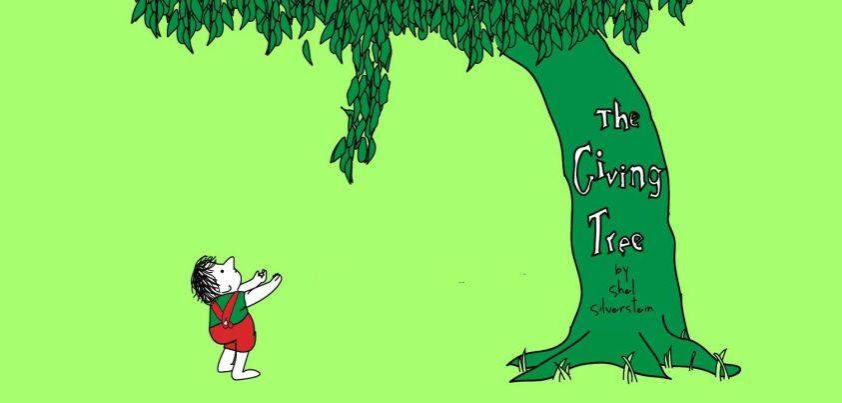 This short children’s story by Shel Silverstein is about a boy who is friends with a tree. He plays under it when he is young, and re-visits it throughout his life. The tree keeps on giving to the boy until it has nothing left to give. The boy does not give anything back to the tree or even say thank you. Readers are left wondering if the closing line And the tree was happy. could possibly be true. If you think of the story as an allegory about a mother’s unconditional love, you will know the answer. More…
This short children’s story by Shel Silverstein is about a boy who is friends with a tree. He plays under it when he is young, and re-visits it throughout his life. The tree keeps on giving to the boy until it has nothing left to give. The boy does not give anything back to the tree or even say thank you. Readers are left wondering if the closing line And the tree was happy. could possibly be true. If you think of the story as an allegory about a mother’s unconditional love, you will know the answer. More…
Kissy Face
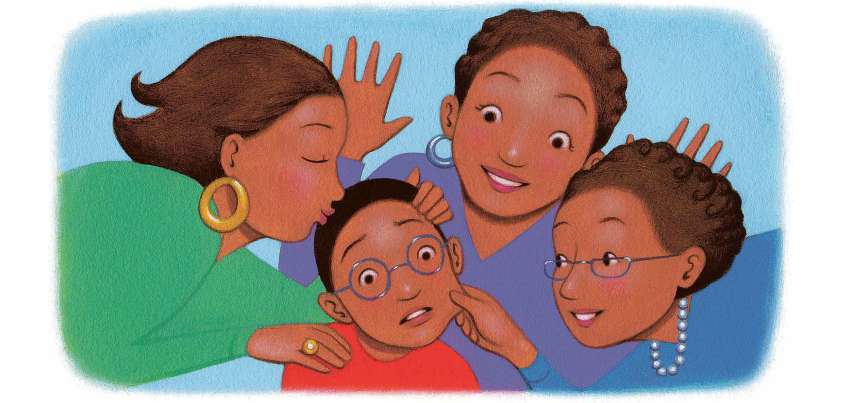 On the surface, this story by Nancy Jean Northcutt for Highlights Magazine is a simple tale about a young boy who doesn’t like being kissed. Like most good stories, it also raises some interesting questions. First, how much of James’s problem with being kissed is because of the hurtful teasing by best friend Ben? Additionally, although James is happy to see the extra attention being given to his new brother now, will he feel the same about this continuing into the future? Finally, how will he handle the extra responsibilities normally expected of the oldest child in a family? More…
On the surface, this story by Nancy Jean Northcutt for Highlights Magazine is a simple tale about a young boy who doesn’t like being kissed. Like most good stories, it also raises some interesting questions. First, how much of James’s problem with being kissed is because of the hurtful teasing by best friend Ben? Additionally, although James is happy to see the extra attention being given to his new brother now, will he feel the same about this continuing into the future? Finally, how will he handle the extra responsibilities normally expected of the oldest child in a family? More…
Smart Ice-cream
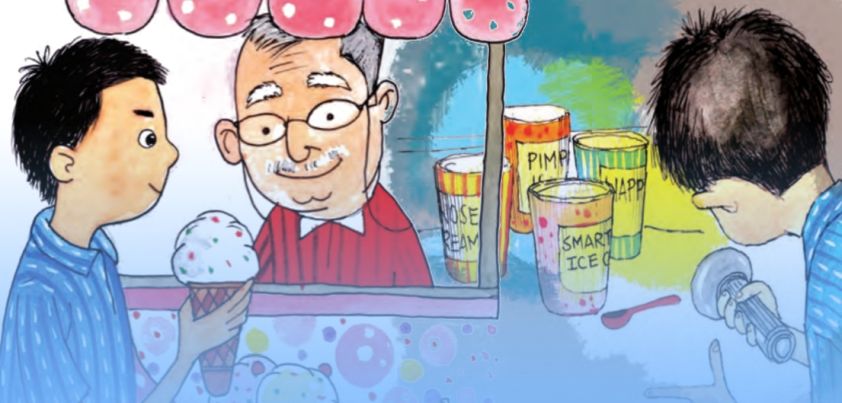 The overall theme of this entertaining fantasy by Paul Jennings can be summed up in the English proverb Pride comes before a fall. Ironically, the protagonist’s boast about how good he is at English doesn’t seem to extend to idioms. If it did, he would have known that the smart alec ice-cream left in the van was meant for him and not Dadian. The only more fitting ending would be if he had also woken up with pimples and a big nose! Themes: (from the protagonist) haughtiness, cruelty, lack of compassion; (from Mr Peppi) kindness, magic, trickery. More…
The overall theme of this entertaining fantasy by Paul Jennings can be summed up in the English proverb Pride comes before a fall. Ironically, the protagonist’s boast about how good he is at English doesn’t seem to extend to idioms. If it did, he would have known that the smart alec ice-cream left in the van was meant for him and not Dadian. The only more fitting ending would be if he had also woken up with pimples and a big nose! Themes: (from the protagonist) haughtiness, cruelty, lack of compassion; (from Mr Peppi) kindness, magic, trickery. More…
The Pig That Went to Market
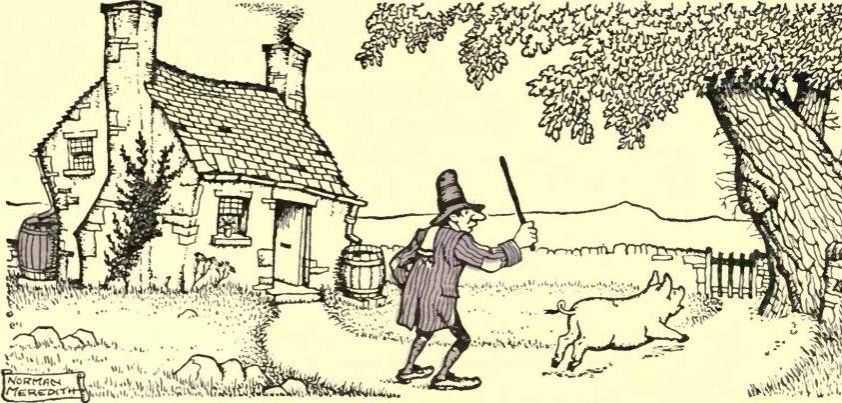 This children’s story by Enid Blyton tells of a man who is so forgetful that he always leaves his kitchen door open. His pig knows this and spends most of its time sitting inside in front of the fire. One day the man finds that he has no money. He decides that selling the pig is a better idea than getting a job. However, his forgetfulness causes problems in taking the pig to market. When he finally does get it there, he receives a beating for his trouble. In the end, he faces an easy decision. More…
This children’s story by Enid Blyton tells of a man who is so forgetful that he always leaves his kitchen door open. His pig knows this and spends most of its time sitting inside in front of the fire. One day the man finds that he has no money. He decides that selling the pig is a better idea than getting a job. However, his forgetfulness causes problems in taking the pig to market. When he finally does get it there, he receives a beating for his trouble. In the end, he faces an easy decision. More…